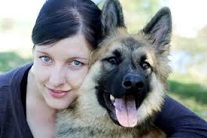German Shepherds are fantastic dogs and are one of the easiest breeds to train. Keep reading for our tips on German Shepherd obedience training…
German Shepherds were first bred in the early 19th century by German Max Von Stephanitz to be a working dog. Today, their quality has become world renowned. They are intelligent, friendly, eager to please their masters, and easy to understand. All you have to do is prove to your German Shepherd that you are the master and show them their place in your “pack”.
Who’s the Alpha and What Do I Get for Listening?
The key to German Shepherd obedience training is showing your dog who’s boss. This doesn’t mean that you have to be mean to your animal or dominate over them completely so that they fear you. You just have to help them gain a healthy respect for who’s in charge. Otherwise, they’ll think they’re in charge and will do whatever they want. If you look at wolves and other wild dogs, you can see how this works. Dogs live in packs. The strongest of the pack becomes the alpha male, the pack leader. The rest of the pack takes part in the hunt, but does not eat until the pack leader has had his fill, or else there’s a fight in which the lesser dog usually loses because the pack leader is stronger. You can show your German Shepherd that you’re the pack leader by providing food. Your dog doesn’t eat until you say so.
The Best Dog Training Aid
Food is an incredibly strong motivator for any living thing. If you want your dog to do something, don’t give him his food until he does what you want. If you tell him to sit, don’t give him his food until he does so. Starting out, you should always have a bit of food or a treat to give him every time you want him to do something. The food will motivate him and provides positive reinforcement for good behaviour. Once your dog is in the habit of doing what you tell him, the food will no longer be necessary every time. You will have established the routine and let your dog know what is expected. You should also keep training sessions brief in order to keep your dog from becoming too frustrated (or too full of treats!) Also, focus on one command at a time. Once your dog learns to do one thing, then move on to the next. Don’t try to make them do everything right at first as they may get confused as to what you want. Using different motions along with the words also helps your dog identify one command from another.





